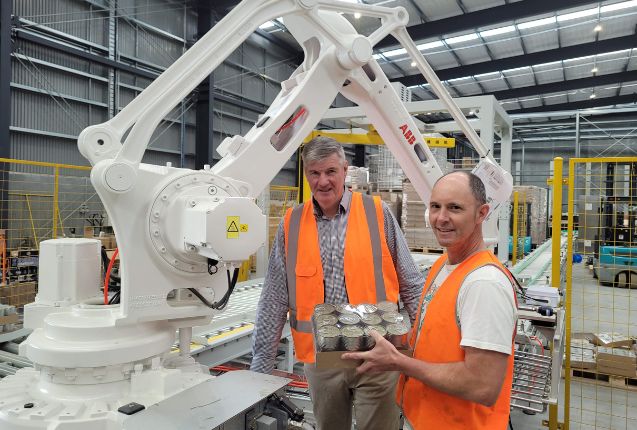Stats NZ Food Price Index (FPI) shows food prices increased 12% for February 2023 compared to a year ago, the highest annual increase since September 1989.
In February, the average cost increase from suppliers to the Foodstuffs co-operatives on the same products measured in the FPI basket was 10.8%, says the Foodstuffs team.
On the same products, the retail price increase to Foodstuffs customers was 10.4% – meaning the co-operatives’ members held prices in their stores at 1.6% less than inflation in February, and 0.4% below cost increases from suppliers to Foodstuffs on the FPI basket.
This month’s Infometrics – Foodstuffs New Zealand Grocery Supplier Cost Index shows cost increases from grocery suppliers to supermarkets up 10.4%pa in February.
“The largest component of shelf prices is the cost of goods from our suppliers – around 68c in every dollar. Major global suppliers are signalling further price increases to come this year,” says the Foodstuffs team.
“We had hoped to see signs by now that food price inflation was starting to turn the corner, but the Auckland floods and Cyclone Gabrielle have put more pressure on prices due to the severe impact on fruit and vegetable crops and the additional costs the sector is facing as a result of these events,” says Foodstuffs NZ Managing Director Chris Quin.
This month’s Infometrics – Foodstuffs New Zealand Grocery Supplier Cost Index shows another record increase in the cost of grocery goods charged by suppliers to supermarkets, up 10.4%pa in February, an acceleration from the 10.0%pa annual rate in January 2023. Increases in produce costs averaged nearly 23%pa in February 2023.
Commenting on the latest food price inflation figures released by Stats NZ, Quin says while the increase isn’t unexpected given the severity of the weather events, the key concern for customers is the availability and affordability of fresh produce.
“We were picking at the start of the year that the trajectory of food price inflation would only become clear after Q1, once both domestic and global economic data was released and decisions on interest rates were made. However, the severe weather in New Zealand could now mean inflation remains higher for longer.
“In the aftermath of Cyclone Gabrielle, our support centre team worked around the clock with our local store owners to reopen their stores so they could provide essential supplies to communities that were cut off.
“Getting over the immediate operational and supply chain challenges was the first hurdle, but we’ll be dealing with the long tail of effects for many months to come.
“Key produce that has been affected by the severe weather includes lettuce, kumara and onions, with a significant amount of apple crops in the Hawkes Bay damaged.
“We’re staying close to growers and suppliers and have announced a support plan for those affected. We’re also working together to manage supply issues.
“It is clear the road to recovery will be different across the range of produce. If you’re talking about leafy greens, they are cropped approximately every five weeks year-round but with kumara and onions, they’ve got a longer growing time (with one crop per year). There is some kumara stock in store, but we are not expecting it to see us through to the new season in 2024.
“The apple harvest is well underway and until it’s done, we won’t know the true position. What we do know is that the wet weather will impact quality and how long the fruit keeps, so while we’ll have more fruit on the local market as we harvest, the full impact on supply will likely be felt towards the end of this year.
“Where we have shortages or need to find additional supply of key produce, we are focused on two solutions for customers – one, bringing product from the South Island to supplement North Island supply and two, the alternatives we can provide in store for customers.
“The impacts on domestic supply chain are still being felt as difficult road conditions, ongoing closures, detours and re-routes are adding significant time, cost and complexity to get our trucks around the North Island.”
Customers change habits to make their grocery budget go further
Foodstuffs’ latest Customer Insights Survey shows the affordability of food and groceries (74%) continues to be the main concern of shoppers and this proportion has increased significantly since October (up from 64%).
The quarterly survey of over 1,000 customers across the Foodstuffs co-operatives provides a snapshot of what’s on shoppers’ minds.
“Around three quarters of customers say they are finding things more difficult financially than last year and just over half are anticipating that things will get worse this year,” says Quin.
“Overall, we’re seeing customers make even greater cutbacks on non-essential items, switching to cheaper brands or house brands and eating out less frequently. Customers are also shopping around for the best deals.”
Since last year, customers say they have been buying less across all supermarket categories, with the largest decreases in snack foods and confectionery (-70% net change).
“Our customers’ shopping habits are largely aligned with what we’re seeing globally in markets like the UK, where customers are also cutting down their weekly shopping list to combat inflation. Many are planning meals for the week, bulk buying and avoiding buying non-essentials,” says Quin.
Has inflation peaked or plateaued?
“Globally economists are of the view that inflation has peaked. But here in New Zealand we are still at the peak of the inflation cycle, with some economists saying at this stage it’s looking more like a plateau. We could be here for some time as the impacts of severe weather events add pressure.
“Our co-operatives are holding food prices below inflation and below supplier cost increases, and through February customers have seen value on fresh produce – in particular, apples, courgettes and cabbages.
“We’ll continue working hard to ensure we’re keeping the shelves stocked and delivering value for customers as the impacts of Cyclone Gabrielle continue to ripple through the country.”
“Stores in the Foodstuffs co-operatives hold price increases to customers below inflation and below supplier cost increases for 10 months in a row,” says Quin.



